←
SPACE WATCH
Compact Planetary System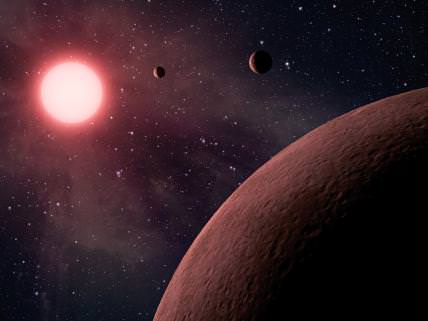 NASA – This artist’s concept depicts a planetary system so compact that it’s more like Jupiter and its moons than a star and its planets. Astronomers using data from NASA’s Kepler mission and ground-based telescopes recently confirmed that the system, called KOI-961, hosts the three smallest exoplanets currently known to orbit a star other than our sun. An exoplanet is a planet that resides outside of our solar system.
NASA – This artist’s concept depicts a planetary system so compact that it’s more like Jupiter and its moons than a star and its planets. Astronomers using data from NASA’s Kepler mission and ground-based telescopes recently confirmed that the system, called KOI-961, hosts the three smallest exoplanets currently known to orbit a star other than our sun. An exoplanet is a planet that resides outside of our solar system.
The star, which is located about 130 light-years away in the Cygnus constellation, is a red dwarf that is one-sixth the size of the sun, or just 70 percent bigger than Jupiter. The star is also cooler than our sun, and gives off more red light than yellow.
The smallest of the three planets, called KOI-961.03, is actually located the farthest from the star, and is pictured in the foreground. This planet is about the size of Mars, with a radius of 0.57 times that of Earth. The next planet to the upper right is KOI-961.01, which is 0.78 times the radius of Earth. The planet closest to the star is KOI-961.02, with a radius 0.73 times the Earth’s.
All three planets whip around the star in less than two days, with the closest planet taking less than half a day. Their close proximity to the star also means they are scorching hot, with temperatures ranging from 350 to 836 degrees Fahrenheit (176 to 447 degrees Celsius). The star’s habitable zone, or the region where liquid water could exist, is located far beyond the planets.
The ground-based observations contributing to these discoveries were made with the Palomar Observatory, near San Diego, Calif., and the W.M. Keck Observatory atop Mauna Kea in Hawaii. Image Credit: NASA/JPL-Caltech
Related articles
- Galactic Views (22) (theneteconomy.wordpress.com)
- Galactic Views (29) (theneteconomy.wordpress.com)
Source: the Net economy


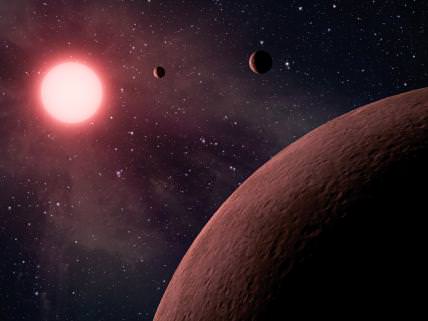 NASA – This artist’s concept depicts a planetary system so compact that it’s more like Jupiter and its moons than a star and its planets. Astronomers using data from NASA’s Kepler mission and ground-based telescopes recently confirmed that the system, called KOI-961, hosts the three smallest exoplanets currently known to orbit a star other than our sun. An exoplanet is a planet that resides outside of our solar system.
NASA – This artist’s concept depicts a planetary system so compact that it’s more like Jupiter and its moons than a star and its planets. Astronomers using data from NASA’s Kepler mission and ground-based telescopes recently confirmed that the system, called KOI-961, hosts the three smallest exoplanets currently known to orbit a star other than our sun. An exoplanet is a planet that resides outside of our solar system.


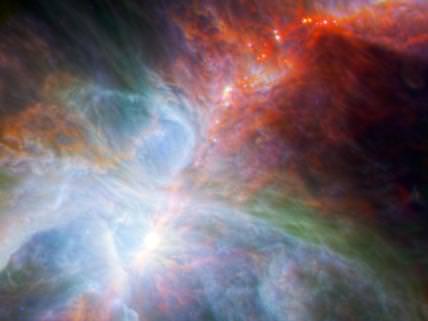 NASA – This new view of the Orion Nebula highlights fledgling stars hidden in the gas and clouds. It shows infrared observations taken by NASA’s Spitzer Space Telescope and the European Space Agency‘s Herschel mission, in which NASA plays an important role.
NASA – This new view of the Orion Nebula highlights fledgling stars hidden in the gas and clouds. It shows infrared observations taken by NASA’s Spitzer Space Telescope and the European Space Agency‘s Herschel mission, in which NASA plays an important role.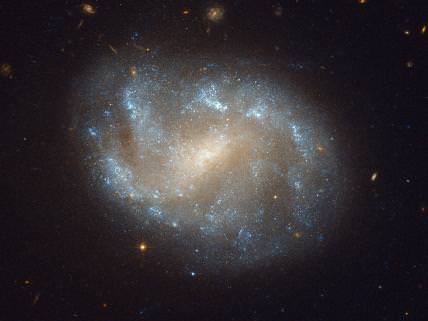 NASA’s Hubble Space Telescope has produced this beautiful image of the galaxy NGC 1483. NGC 1483 is a barred spiral galaxy located in the southern constellation of Dorado — the dolphinfish (or Mahi-mahi fish) in Spanish. The nebulous galaxy features a bright central bulge and diffuse arms with distinct star-forming regions. In the background, many other distant galaxies can be seen.
NASA’s Hubble Space Telescope has produced this beautiful image of the galaxy NGC 1483. NGC 1483 is a barred spiral galaxy located in the southern constellation of Dorado — the dolphinfish (or Mahi-mahi fish) in Spanish. The nebulous galaxy features a bright central bulge and diffuse arms with distinct star-forming regions. In the background, many other distant galaxies can be seen.
 This Sunday, March 11, marks the one-year anniversary of northern Japan’s threefold devastating disaster — a 9.0 magnitude earthquake, a tsunami that engulfed entire towns and cities, and a nuclear disaster that has since shut down 52 out of 55 commercial reactors in Japan and stirred an international debate about nuclear energy.
This Sunday, March 11, marks the one-year anniversary of northern Japan’s threefold devastating disaster — a 9.0 magnitude earthquake, a tsunami that engulfed entire towns and cities, and a nuclear disaster that has since shut down 52 out of 55 commercial reactors in Japan and stirred an international debate about nuclear energy. 
 This year, for the anniversary, the Quakebook team has created another book, this time striving to provide independent, unfiltered analysis about — in Quakebook’s words — “what has happened, and what has not since 3/11.” The book, Reconstructing 3/11: Earthquake, tsunami and nuclear meltdown — how Japan’s future depends on its understanding of the 2011 triple disaster, was published on March 8 and is now officially available on Amazon.
This year, for the anniversary, the Quakebook team has created another book, this time striving to provide independent, unfiltered analysis about — in Quakebook’s words — “what has happened, and what has not since 3/11.” The book, Reconstructing 3/11: Earthquake, tsunami and nuclear meltdown — how Japan’s future depends on its understanding of the 2011 triple disaster, was published on March 8 and is now officially available on Amazon. Buying someone a drink in person is a nice gesture, but buying someone a drink via Twitter is, well, not something you do often.
Buying someone a drink in person is a nice gesture, but buying someone a drink via Twitter is, well, not something you do often.



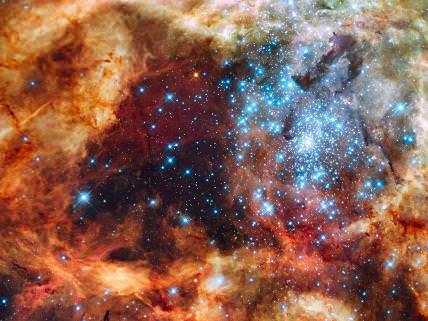 NASA – This massive, young stellar grouping, called R136, is only a few million years old and resides in the 30 Doradus Nebula, a turbulent star-birth region in the Large Magellanic Cloud, a satellite galaxy of the Milky Way. There is no known star-forming region in the Milky Way Galaxy as large or as prolific as 30 Doradus.
NASA – This massive, young stellar grouping, called R136, is only a few million years old and resides in the 30 Doradus Nebula, a turbulent star-birth region in the Large Magellanic Cloud, a satellite galaxy of the Milky Way. There is no known star-forming region in the Milky Way Galaxy as large or as prolific as 30 Doradus.